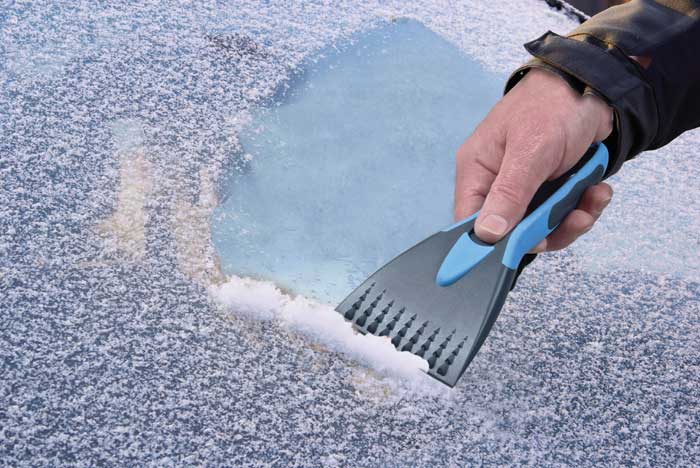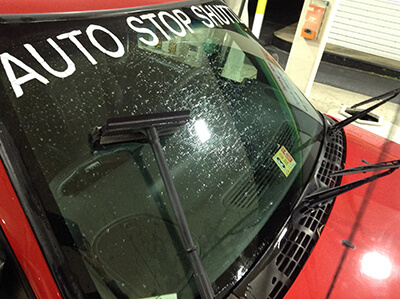Winter Checklist
Many of us in the DC area got our first taste of cold this past weekend, with two nights that fell below freezing. Winter is inevitably around the corner, so make sure you and your car are adequately prepared! Your team at Auto Stop has put together a winter safety checklist for your vehicle that you can perform at home:
Battery
How old is your car battery? Has it died more than once in the past six months? Cold temperatures put a strain on the chemical reactions inside a battery. That means if its performance was poor in the fall, it may not make it through the winter. Consulting your service records to determine the age of the battery is a good starting point. If it has been in your car for more than three years, we would recommend having it tested (we offer this service free of charge). Don’t get caught in the cold this winter with a weak battery!
Tires
All-season tires do not behave the same in the winter as they do in the summer. The colder the conditions, the less malleable the rubber becomes. This means that they won’t grip the road as well. This is increasingly noticeable in wet conditions, so it is very important to give your tires a visual inspection before winter arrives. The tread on your tires is their primary defense against hydroplaning and channeling out road water. Notice below how the good tread is able to route all the hose water away from the surface of the tire. When you look them over, take notice of low or uneven tread-wear and be sure to inspect all four tires!

One other factor that can affect grip is tire pressure. In theory, your tires’ air pressure will drop 1 PSI with every 10 degree F drop in temperature. This is a significant difference if you imagine a difference of up to 8 PSI from summer to winter! Driving on underinflated tires will also decrease fuel economy and can lead to a blowout.
Give a visual inspection to each tire, looking for low tread, uneven tread wear, and low air pressure.
Windshield
Make sure you have the necessary tools to keep your windshield clean! A must-have for any car owner is an ice scraper. This will speed up departure time and you won’t have to wait for your defroster to warm up.

Secondly, it is a good idea to clean the windshield periodically. Grime and debris gets kicked up off the road and will make your windshield wipers’ job harder. Cleaning it at the gas station each time you fill up, for example, will make life a lot easier the next time you are driving at night or directly in the sun’s glare.

Lastly, make sure you have a reputable brand of washer fluid that advertises a 0°F freezing point. If the fluid in your reservoir freezes, you won’t be able to clean your windshield on the fly. Not to mention, the expansion of freezing fluid can damage the washer system!
Coolant
There is often a misconception that adequate coolant is only necessary during the summer months. However, one function of engine coolant that should not be forgotten is its ability to provide a lower freezing point than water (hence the byname antifreeze). Characteristics of your coolant will deteriorate with time, so if your system has not been flushed in the last few years (or ever), you could potentially run into problems if your area experiences below-average temperatures. Consult your service records to see the last time your cooling system was serviced.
Lights
From summer solstice to winter solstice, the DC area loses up to five hours of daylight, which means more commutes will be done in the dark. Extra care should be taken to make sure that all your exterior lights are working properly. Have a friend help you do a light check. This can be useful to perform before leaving on long road trips, as well. Turn on the headlight switch and walk around the car to check your parking lights (the first two images). Also make sure you don’t have a burnt out headlight (blue arrow), high beam bulb (pink arrow), or fog light – if equipped (red arrow).

Next, have your friend do the turn signals – are both sides working, front and back? Ask your friend to turn off the headlights and depress the brake pedal – are all your brake lights working? Have your friend shift into reverse – are both reverse lights working?

Lastly, turn your headlights back on and check your license tag light. This is the most common light people get pulled over for. Any lights that are burnt out can yield a ticket from your local police department. Not to mention, you want to be visible to others when you are out on the road!

Warning Indicators
A warning light indicates a fault in one of your vehicle’s systems. Are there any warning signals illuminated on your dashboard?
A lot of these systems work in unison, so one being immobilized could affect the performance of another. For example, most stability systems use the ABS wheel sensors. So if there is a fault within your ABS system (and the light is illuminated), your traction control could be impacted, as well.
These systems are in place to prevent loss of control and accidents, and winter is one of our area’s worst seasons for hazardous driving conditions. It is very important to ensure that these systems are fully functional. Make it a priority to get those warning lights diagnosed and resolved if any of them are illuminated.
State Tags
Are all your tags up to date? In Virginia, there are a few tags that require attention each year. Each tag has its own expiration date, but they sometimes go unnoticed. The end of the year can be a good time to make sure they are all still current since police can issue tickets for out-of-date tags.
The first are the stickers in the top corners of your license plate. These correspond to the renewal of your vehicle’s registration in Virginia. Also, in Northern Virginia, you are required to pass a State Emissions Test before these renewal tags can be processed.

The next decal is your Safety Inspection sticker that’s located on the windshield. This annual inspection ensure1 that each vehicle complies with safety regulations and is capable of safe operation on the Commonwealth roads.
 These two tests have a fixed price by the Virginia State Police and cost $44 (Emissions $28 and Safety $16) annually.
These two tests have a fixed price by the Virginia State Police and cost $44 (Emissions $28 and Safety $16) annually.
Lastly, if you live in Arlington County (or any other jurisdiction that requires a windshield decal for personal property tax), you will have an extra windshield decal that is also renewed annually.

In short, preparing yourself and your vehicle for the winter months will help you stay safe while you a1e out on the roads. If you have any questions regarding this checklist or would like to bring your car in for a courtesy inspection, contact one of our two locations in Falls Church and Arlington today!

